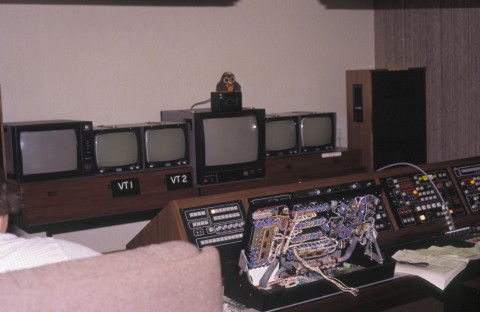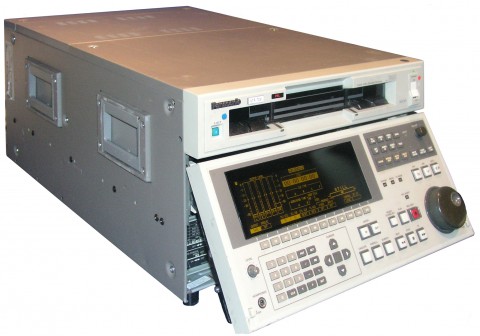
Balcony of the 2nd floor bar: Ivor Williams, Nigel Evans, Mike Bloore, John Burkill
Photo by Tim Savage
VT Office
When Pebble Mill was first built, the BBC Club was on the second floor, and became known affectionately by some as the VT Office. It was true that most of the VT staff could be found there at lunch time, and that many conversations with programme staff, producers, and directors took place there over a pint. That in a sense was the cauldron of ideas, that quite often led to innovative programme ideas that came to distinguish Pebble Mill. Departments were small enough, and the bar just about big enough that representatives from all disciplines could come together socially and exchange ideas.
I was only an occasional user, usually having ventured there to collect a Radio Times, but for some it was their regular lunchtime activity. It was there that the problem lay, in that it was just a bit too convenient on the 2nd floor, and more than one of my colleagues was recognised as having a drink problem, and sent on a “drying out” course by the BBC management. As space became more of a premium, the new Club building was built and the second floor returned to office space. I don’t remember the details of the changeover but the net result was that a more deliberate decision was needed to go to the club, rather than just falling out of the lift at the second floor.
Ray Lee
The following comments were left on the Pebble Mill Facebook Group:
Jane Clement: ‘Ah, the second floor bar – home of my first Pebble Mill job (barmaid) and the scene of many an interesting night (and lunchtime). The tales I could tell from both sides of the bar as a barmaid then a researcher, then an AP…The new Club that replaced it was never quite the same.’
Lynn Cullimore: ‘Ooh yes, some people I could mention did use it as their office but you are right, I am sure many programme ideas were thought up there. The new bar was never quite the same! I remember my first rum punch day (the first of many) – or rather there were parts of it that I forgot!’




